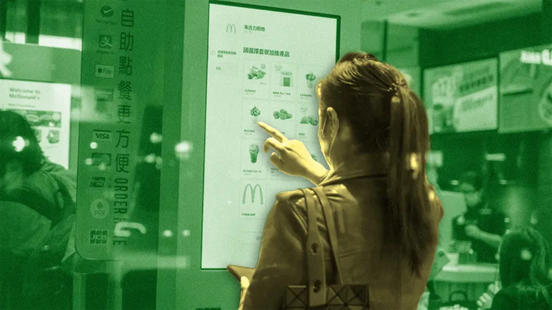McDonald’s Q2 2025 earnings call wasn’t just about burgers and fries; it was a masterclass in corporate tech strategy. The key takeaway is that McDonald’s digital transformation is no longer a side project—it’s the central engine for future growth. As CEO Chris Kempczinski put it, “Our progress to digitize the Arches is unleashing the full potential of our size and scale.”
McDonald’s is providing a powerful case study in how even the most established brands can modernize without losing their core identity. The success of the McDonald’s digital transformation comes down to three clear steps that emerged from the recent call. For any business leader looking to modernize, this is a blueprint for success.
1. A Digital Customer Journey: Key to Their Transformation Strategy
The first pillar of this strategy is a deep focus on digitizing the customer experience. With over 185 million active loyalty users globally, the results are undeniable. In the US, a customer’s visit frequency jumps from an average of 10.5 times a year to 26 times a year after joining the loyalty program.
New features like “Ready on Arrival” are being rolled out to enhance this digital journey further. Kempczinski noted this feature can “reduce wait times for food pickup by more than 50%, and in many cases, eliminate them altogether,” a tangible benefit for the customer.
2. Infrastructure: The Foundation of McDonald’s Digital Transformation
Perhaps the most significant long-term investment is in foundational technology. By embracing edge computing, McDonald’s digital transformation is extending cloud capabilities directly to its restaurants. Kempczinski described this as “the digital foundation for the next generation of restaurant innovation that powers AI and Internet of Things enabled restaurants.”
This infrastructure-first approach, a core tenet of their successful digital transformation, delivers immediate and scalable benefits, including:
- Increased Restaurant Uptime: Predictive maintenance helps prevent equipment failures before they happen.
- Enhanced Experience: Faster and more accurate service for both customers and crew.
- Improved Quality & Savings: Better food consistency and significant cost-saving opportunities at scale.
This approach avoids the pitfalls of chasing trends, like the innovator’s dilemma in entertainment, by ensuring the system can support new technology.
3. Unifying the Back Office to Scale the Transformation
Finally, McDonald’s digital transformation extends to the very core of its global operations. CFO Ian Borden detailed the massive project of moving “from hundreds of legacy systems to standardized modern global platforms” for finance and HR. This isn’t just a backend cleanup; it’s a strategic move to enable speed and agility.
Borden explained, “It’s about…common platforms, standard infrastructure that allows us to scale innovation at speed.” A unified back office means a new feature or efficiency can be deployed globally, not re-engineered for hundreds of different legacy systems. This is crucial for shrinking the supply chain and maximizing operational efficiency.
Lesson Learned from McDonald’s digital transformation: Foundation First, Innovation Second
The “Accelerating the Arches” strategy proves that McDonald’s digital transformation is more than a marketing slogan—it’s a comprehensive tech modernization effort. As detailed in their Q2 2025 investor report, the goal is to scale innovation faster, improve experiences, and unlock long-term efficiencies. For a 70-year-old brand, this isn’t just adaptation; it’s a full-scale reinvention.
The powerful lesson for any organization is clear: True transformation isn’t about chasing the next “shiny object.” It’s about building a solid digital foundation first, then layering on innovations that your team and customers can immediately feel and benefit from.

Related content you might also like:

